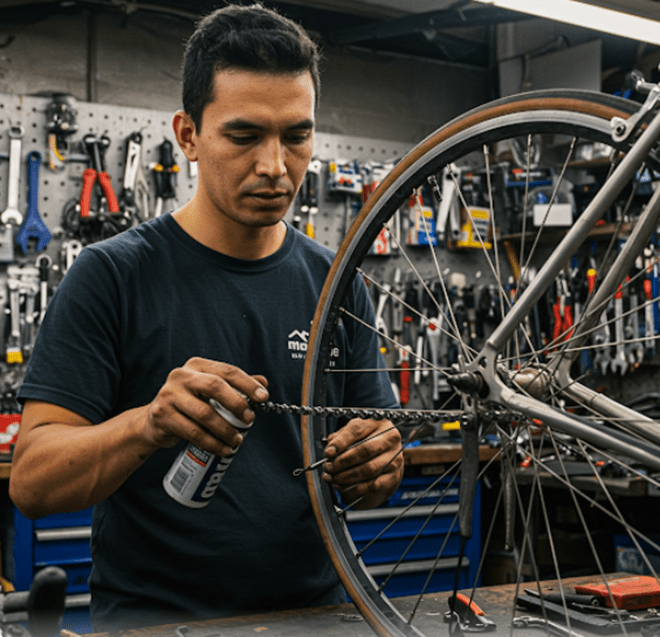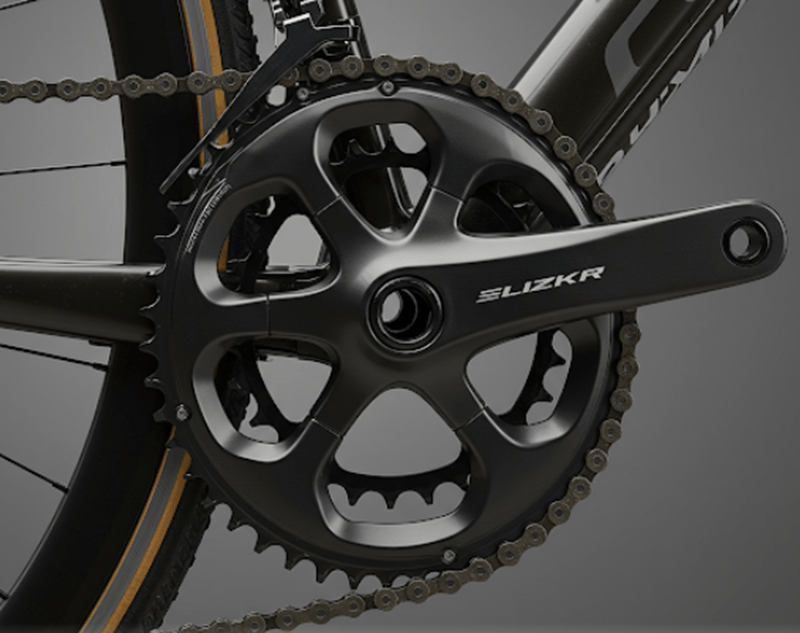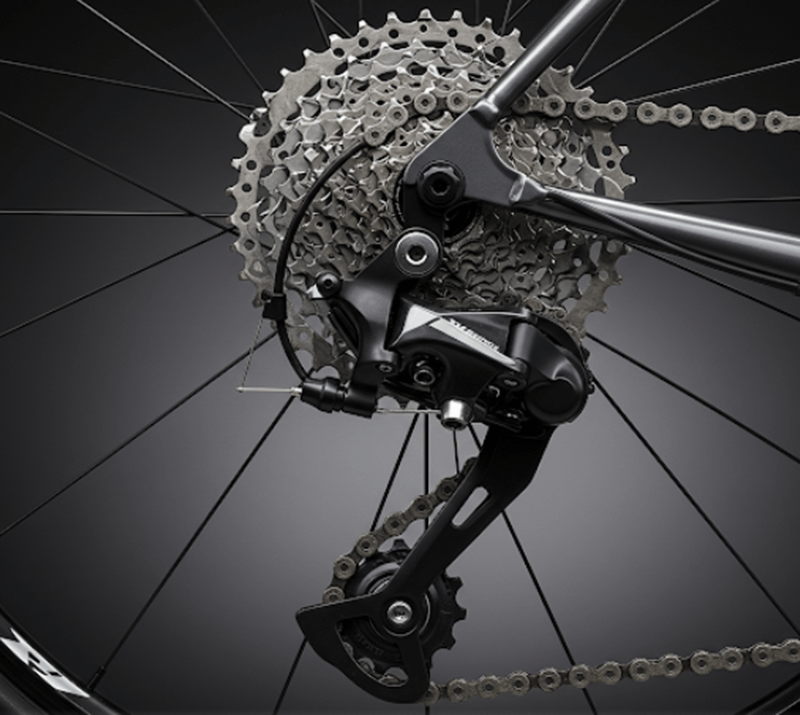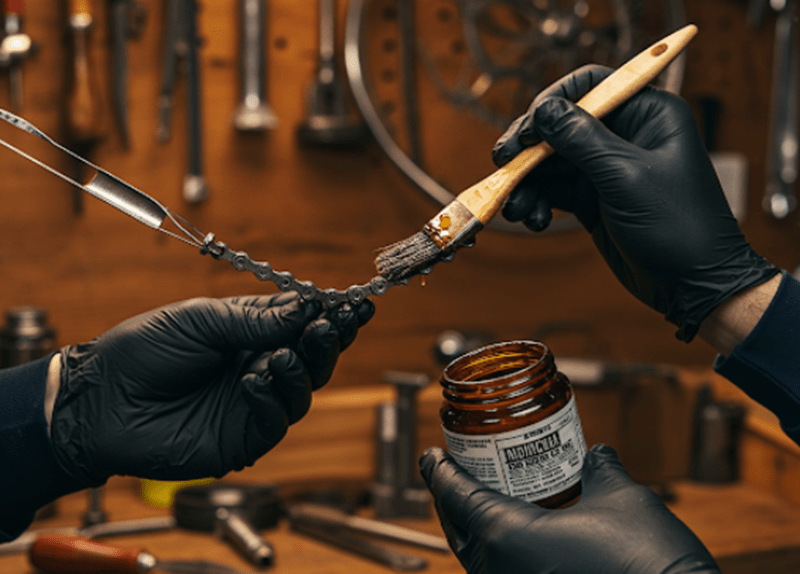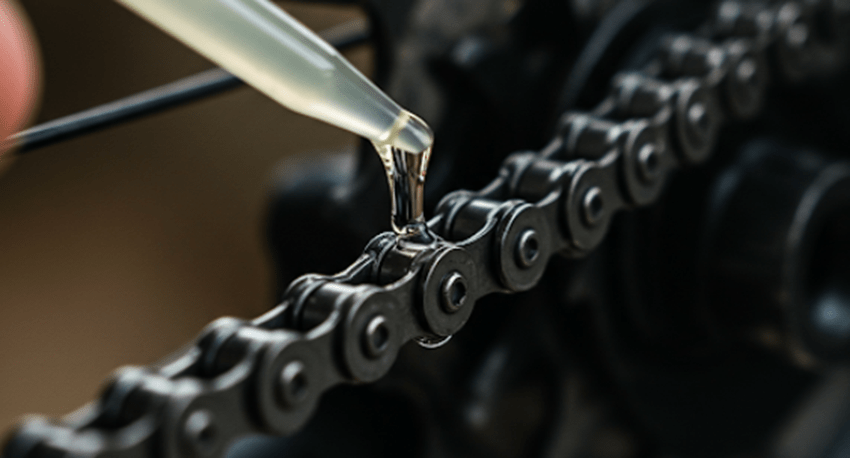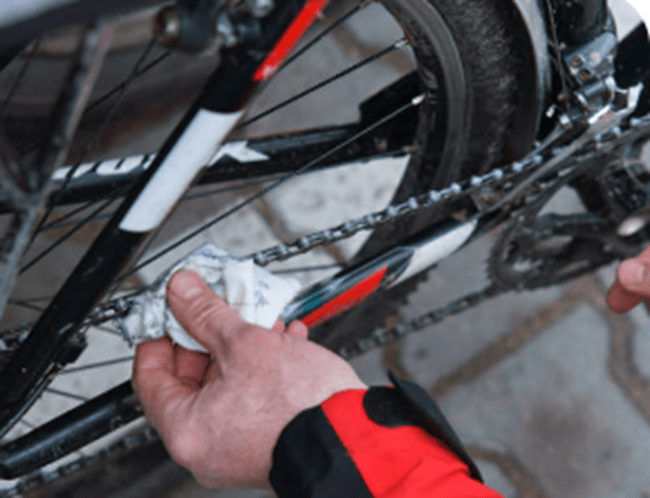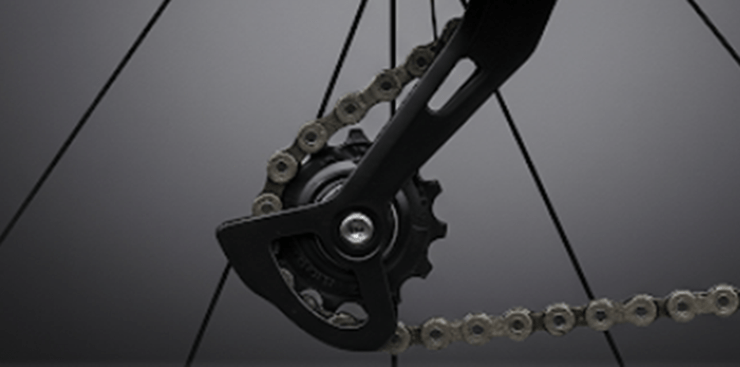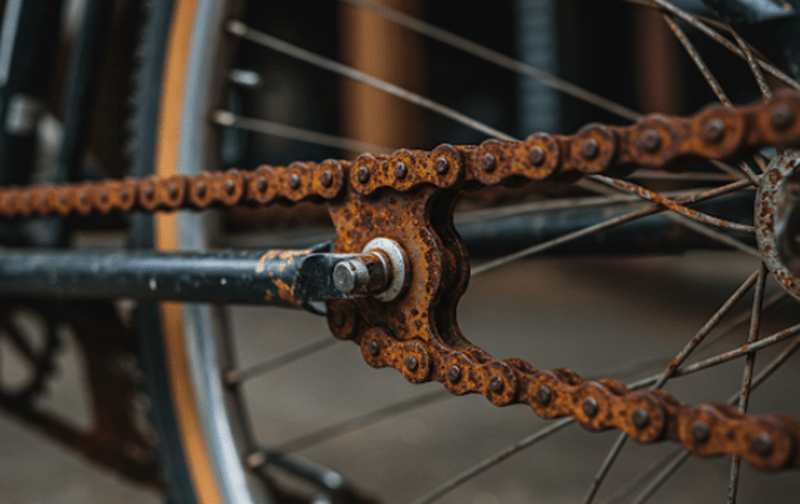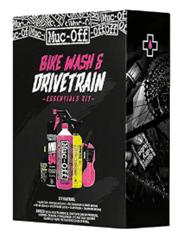Contents
- 1 The Unsung Hero of Your Ride: Properly Lubricating Your Bicycle Chain
- 2 Why a Well-Lubricated Bicycle Chain is Key to Peak Performance
- 3 Decoding the Options: Choosing the Right Bicycle Chain Lubricant
- 4 The Art of Application: A Step-by-Step Guide to Lubricating Your Bicycle Chain
- 5 Beyond the Basics: Maintaining Your Bicycle Chain for Longevity
- 6 Silence the Squeaks and Smooth the Shifts: Troubleshooting Your Bicycle Chain
The Unsung Hero of Your Ride: Properly Lubricating Your Bicycle Chain
The bicycle chain is the essential component that translates the power generated by your legs into the forward motion of your bike. It acts as the crucial link in the drivetrain, efficiently transferring energy from the pedals to the wheels. Often overlooked in favor of more visually prominent parts, the condition of your chain significantly impacts the efficiency and enjoyment of every ride. Even a minor increase in friction within the drivetrain can lead to a noticeable loss of power and a less smooth cycling experience. Regular maintenance, particularly the consistent and correct lubrication of your bicycle chain, is paramount for unlocking your bike’s top performance and extending the lifespan of its vital components.
Proper lubrication ensures smoother, quieter rides and plays a crucial role in preventing premature wear and tear, ultimately saving you money on costly repairs or replacements down the line. While cyclists often pay attention to tires, brakes, and gears, neglecting the bicycle chain is a common oversight, despite its fundamental role in the bike’s operation. The chain’s condition directly influences the efficiency of each pedal stroke. This article will guide you through the importance of proper chain lubrication, the various types of lubricants available, and a step-by-step process for effective application, ensuring your bike performs at its absolute best.
Why a Well-Lubricated Bicycle Chain is Key to Peak Performance
Maintaining a well-lubricated chain offers a multitude of benefits that contribute directly to a superior cycling experience and the longevity of your bike’s drivetrain. One of the primary advantages is the significant reduction in friction. Lubrication minimizes the direct contact between the metal components of the chain, such as the pins and rollers, leading to less wasted energy during pedaling. Studies suggest that proper lubrication can decrease friction by as much as 50%. This efficiency gain translates directly to faster speeds and a noticeable reduction in the effort required to maintain your pace.
Beyond enhancing performance, consistent bicycle chain lubrication plays a vital role in extending the lifespan of your bike’s components. By reducing friction and wear, you prevent premature damage not only to the bicycle chain itself but also to the cassette and chainrings, which are integral parts of the drivetrain. Without proper care, a bicycle chain might need replacement every 2,500 kilometers, whereas a well-lubricated one could last upwards of 5,000 kilometers, depending on riding conditions. This extended lifespan translates to considerable cost savings over time, as you’ll need to replace these expensive drivetrain parts less frequently.
Obtain A Smoother And Quieter Ride
A lubricated chain also contributes significantly to a smoother and quieter ride. The annoying squeaking and grinding sounds that often accompany pedaling are telltale signs of a dry chain where metal is rubbing against metal. Proper lubrication eliminates this friction, resulting in a more enjoyable and less obtrusive cycling experience.
Furthermore, a well-maintained bicycle chain ensures smooth and precise gear changes. A dry or stiff bicycle chain can cause delays or difficulty in shifting gears, impacting your ability to adapt to varying terrains and riding conditions. Lubrication allows the chain to move freely across the gear cogs, ensuring seamless transitions between gears.
Smooth Rides Ahead: Top-Rated Bicycle Chain Lubricants:
Discover which premium chain lubes cyclists trust for longer-lasting drivetrains and whisper-quiet performance! Learn more →
Finally, lubrication provides a crucial layer of protection against rust and corrosion, particularly important when riding in wet conditions. This protective barrier prevents moisture from directly attacking the metal of the bicycle chain, preserving its integrity and functionality over time. A visual indicator of a well-lubricated chain is a subtle shine, contrasting with the matte or dry appearance of a chain in need of attention.
Decoding the Options: Choosing the Right Bicycle Chain Lubricant
Selecting the appropriate lubricant is a crucial step in ensuring your chain performs optimally. The market offers a variety of options, each designed with specific riding conditions and preferences in mind.
Wet lubes are characterized by their thicker, oil-based composition, which allows them to adhere strongly to the chain. They are particularly well-suited for wet and muddy conditions, as well as for long rides and winter cycling, offering excellent protection against moisture and rust. However, a drawback of wet lubes is their tendency to attract more dirt and grime, necessitating more frequent bicycle chain cleaning.
Dry lubes, in contrast, are lighter and often formulated with Teflon or wax, which evaporates after application, leaving behind a dry, protective film. These are ideal for dry and dusty conditions as they attract less dirt. However, dry lubes tend to wash off more easily in wet conditions and may require more frequent reapplication.
Wax Based Lubes: Increased Cleanliness / Efficiency
Wax-based lubes have gained popularity for their cleanliness and efficiency, attracting very little dirt. They are a strong choice for dry and dusty environments and for riders who prioritize a clean drivetrain. While some wax-based options offer good performance in mixed conditions, they generally require a meticulously clean bicycle chain for the initial application, and the lubrication process can sometimes be more time-consuming.
Hot waxing is an advanced technique that provides superior benefits in terms of performance and cleanliness but involves a more involved process. All-purpose lubes are designed to perform adequately in a wide range of conditions, making them a convenient option, especially for beginners or those who ride in varied environments. While they offer a good balance, they might not provide the specialized performance of a dedicated wet or dry lube in extreme conditions.
Ceramic lubes incorporate ceramic particles into their formula, aiming for lower friction and longer-lasting lubrication. These are often favored by riders seeking high performance and extended lubrication intervals. However, they can be more expensive, and some independent testing has raised questions about the magnitude of their performance advantage over other high-quality lubricants.
Ultimately, the best choice of chain lubricant hinges on your typical riding conditions. For consistently wet or muddy rides, a wet lube is likely the most effective. If you primarily ride in dry, dusty areas, a dry or wax-based lube might be a better fit. All-purpose options provide a versatile solution for varied conditions. Many reputable brands offer high-quality lubricants within each category, such as Tri-Flow, Pro-Link, Squirt, Muc-Off, and Finish Line.
The Art of Application: A Step-by-Step Guide to Lubricating Your Bicycle Chain
Before applying any lubricant, it is essential to ensure your chain is clean. Applying lubricant to a dirty bicycle chain is counterproductive as it traps existing dirt and grime, which can actually accelerate wear. Depending on the level of soiling, you might simply wipe the bicycle chain with a cloth, use a brush to remove debris, or opt for a more thorough degreasing.
Once your bicycle chain is clean, follow these steps for proper lubrication:
1. Apply lubricant to the inside of the chain: The goal is to lubricate the rollers and pins, which are the primary points of friction. Use a drip bottle for the most precise application. Avoid spray lubricants as they can lead to overspray and potentially contaminate brake components 56. Apply one small drop of lubricant to each link as you slowly pedal backward. Ensure that you cover the entire length of the bicycle chain.
2. Allow lubricant to penetrate: After applying the lubricant, give it a few minutes to seep into the inner workings of the links. For wax-based lubricants, it’s often recommended to allow a longer drying time, sometimes even overnight, to ensure the carrier fluid evaporates properly.
3. Wipe off excess lubricant: This step is crucial for preventing dirt and debris from adhering to your bicycle chain. Use a clean, dry rag to gently wipe down the outside of the bicycle chain, focusing on removing any lubricant from the outer plates. Remember that the lubricant inside the rollers is what provides the necessary friction reduction.
Superior Shifting: 5 Top-Rated Bicycle Chains Worth Every Penny
Discover which durable chains cyclists recommend for smoother rides and enhanced power transfer! Learn more →
Many cyclists tend to over-lubricate their chains. The key is to apply a minimal amount to each link and then thoroughly wipe away any excess. The goal is to lubricate the internal moving parts effectively, not to create a thick, sticky coating on the entire bicycle chain that will attract dirt. As a general guideline, lubricate your chain every 100 to 200 miles, or whenever you notice it starting to sound dry or make noise. The frequency might need to be adjusted based on your specific riding conditions.
Beyond the Basics: Maintaining Your Bicycle Chain for Longevity
Consistent chain cleaning is just as important as lubrication for maximizing the lifespan and performance of your drivetrain. Regular cleaning removes dirt, grime, and old lubricant that can act as an abrasive, increasing wear on the chain, cassette, and chainrings. You can perform spot cleaning by wiping the chain with a rag after each ride, or opt for a more thorough deep cleaning periodically. Tools like chain cleaning devices and various brushes can aid in this process. Degreasing is particularly important when your bicycle chain is heavily soiled or when you plan to switch to a different type of lubricant. It’s worth noting that WD-40 is not recommended as a bicycle chain lubricant.
Regularly checking for bicycle chain wear is another crucial aspect of maintenance. As a bicycle chain wears, it elongates, a phenomenon often referred to as “chain stretch”. This elongation can lead to inefficient power transfer and accelerated wear on the cassette and chainrings. Using a chain wear indicator tool allows you to accurately assess the condition of your chain and replace it before it causes damage to other drivetrain components.
Silence the Squeaks and Smooth the Shifts: Troubleshooting Your Bicycle Chain
Addressing common issues related to chain lubrication promptly can prevent minor inconveniences from escalating into significant problems.
A squeaking bicycle chain is a common indicator that it is dry and in need of lubrication. Reapplying lubricant following the steps outlined earlier should resolve this issue. However, if the squeaking persists even after lubrication, it could indicate other problems, such as a dry bottom bracket or seized derailleur pulleys.
Difficulty shifting gears can often be attributed to a dry or stiff bicycle chain. Ensuring proper lubrication is the first step in addressing this. If shifting problems continue, the chain might be worn out or damaged, necessitating replacement.
Rust on the chain is a sign of moisture exposure and inadequate lubrication. Prevention is crucial; keeping the chain clean and well-lubricated, especially after riding in wet conditions, is essential. Light surface rust can sometimes be removed using household remedies like vinegar or baking soda, or with dedicated rust removers. However, severe rust that affects the chain’s movement might indicate the need for replacement.
Taking care of bicycle chain issues promptly is vital for maintaining the health of your entire drivetrain. Ignoring squeaks, difficulty shifting, or the presence of rust can lead to accelerated wear on more expensive components, ultimately impacting your cycling performance and potentially leading to costly repairs.

|
We earn from qualified Amazon purchases with NO cost to you. ANY item that you need or were going to purchased anyway through any of our links, helps support this site. Thank you for your support!
If you enjoyed learning about this week’s featured bicycle, don’t miss out on more classic bike goodness! Visit our website at classicjapanesebicycles.com for an extensive collection of timeless Japanese bikes and their unique stories. Plus, check out our YouTube channel, Bicycle Restoration Man, for detailed restoration videos and showcases of our finished projects. Subscribe and join our community of bike enthusiasts!


